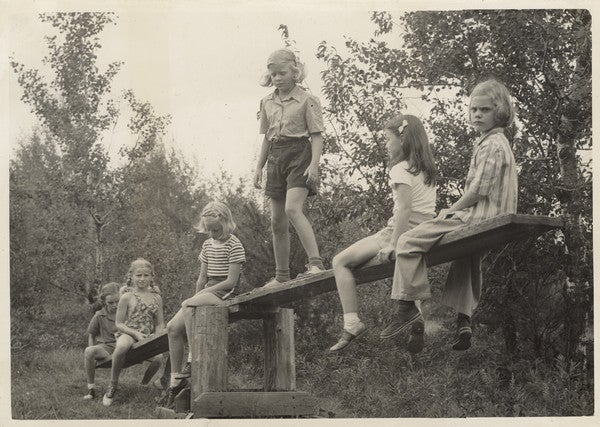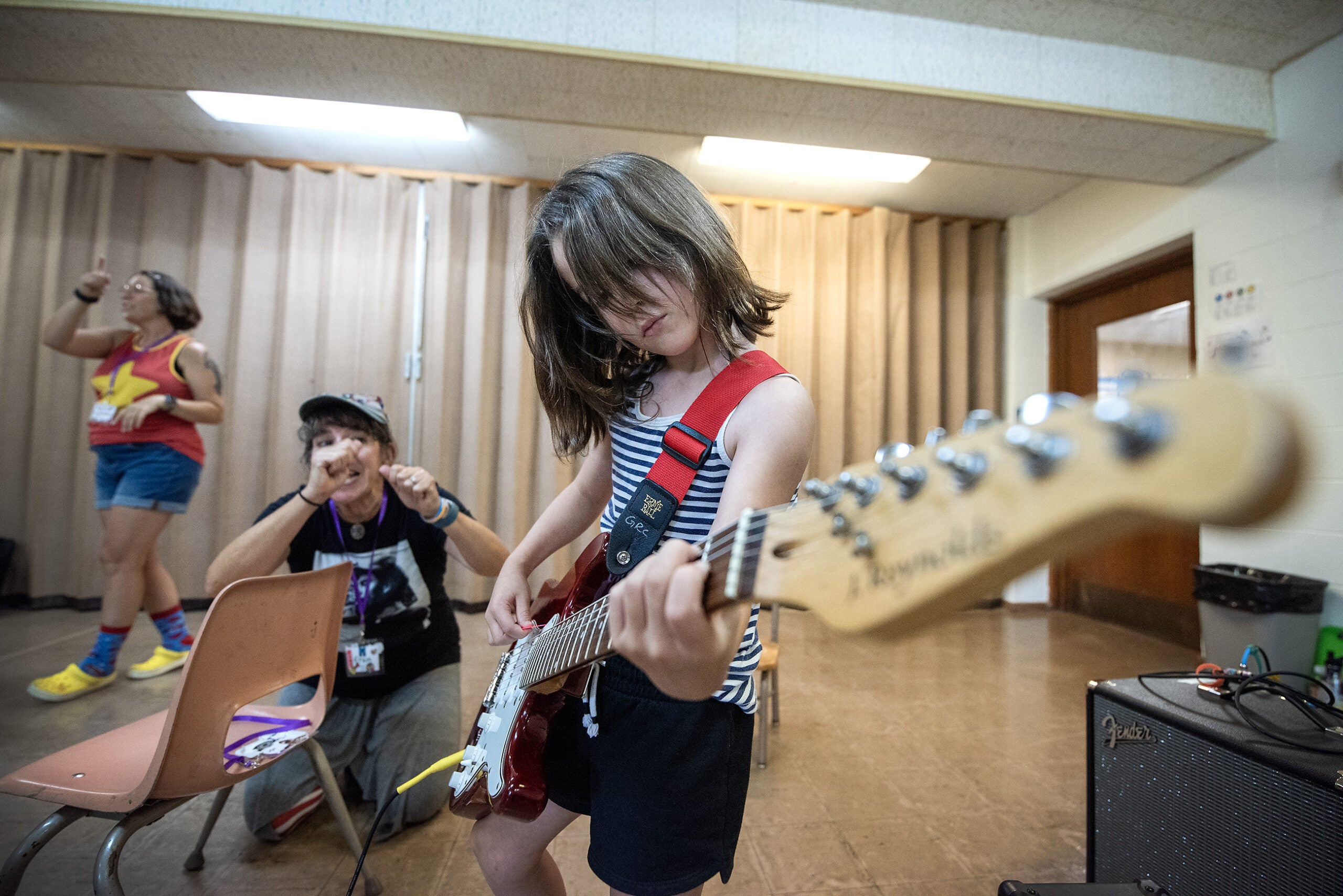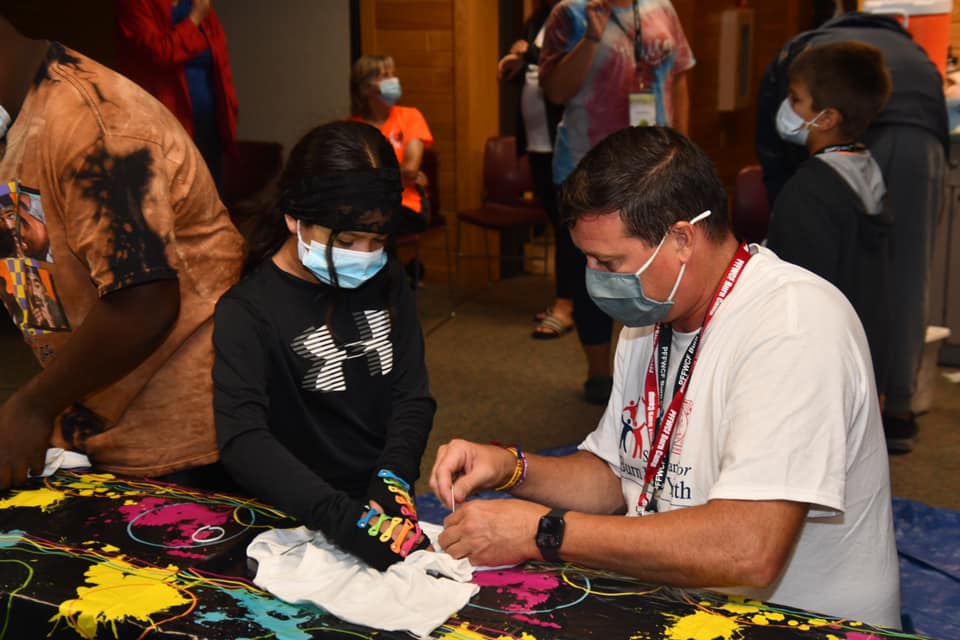In the above image, campers sit and stand on a seesaw at Joy Camps in Hazelhurst.
Camp is a staple of summer for kids. Children today can choose from a wide variety of summer camp options — from circus camp and airplane camp to traditional residential camps.
The first summer camps weren’t nearly so specialized.
Stay informed on the latest news
Sign up for WPR’s email newsletter.
The idea of summer camp emerged in the mid-to-late 19th century as a way for urban dwellers to escape the ills of city life. These early camps catered primarily to upper-class boys but soon camps appeared for middle and lower-class children and camps for girls. Time in nature was thought to restore the essential skills and hardy temperament that many feared urbanization was stripping away from Americans.
Established in the late 19th century, Phantom Lake is the oldest YMCA camp in Wisconsin and one of the oldest camps in the country. The camp only admitted boys until the 1930s when increased demand from parents led to the opening of the first girl’s camp in 1931.
Wisconsin camps attracted campers from inside and outside Wisconsin. In 1946, the Chicago Tribune reported on the campers arriving in Wisconsin for the summer camp session: “On the evening before camp season opens, what a spectacle it is to watch special trains pull in and see happy youngsters climb out. Pandemonium rules while the children hurry to find station wagons waiting to take them to camp.”
Among the camps mentioned was Miss Ruth Pinkhurst’s Camp Agawak in Minocqua, which had lake water so clear and pure “to be used for drinking.” And at Plum Lake, in Sayner, the counselors at Warwick Woods had come early in the year to start chickens so that postwar shortages of meat wouldn’t be a problem for the campers.
With the growing number of camps, camps had to set themselves apart to attract attention. Camp Minne-Wonka, a private girls camp on Big Fork Lake in Three Lakes, compiled its camper information into a nut-shaped brochure appropriately titled “In A Nutshell” around 1954. The camp advertised itself as being in an “excellent climate for sufferers from hay fever” located at “the gateway of the new Nicolet National Forest, where native wild life of all kinds and the primitive beautify of virgin forest and wilderness lakes is preserved for all time.”
The counselors were all college women with an expertise in camp activities and in “living with girls.” Camp cost $450 for eight weeks and drew girls “from homes of culture and refinement throughout the United States.”
Wisconsin Public Radio, © Copyright 2024, Board of Regents of the University of Wisconsin System and Wisconsin Educational Communications Board.




